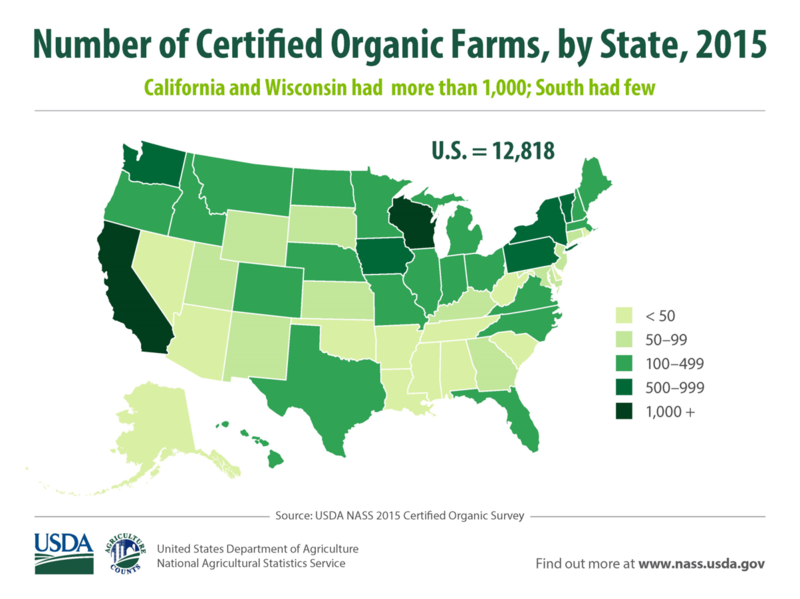Hydroponic farming is a method of growing plants without soil, using mineral nutrient solutions in a water solvent. Hydroponics can rapidly help serve unmet demands for fresh organic vegetables, grown close to their market. To certify soil for organic farming after its been used in conventional farming takes years. Hydroponics operators can bypass that timeline.
Organic Hydroponics
U.S. consumer demand for fresh, locally-grown, organic food continues to grow. The U.S. organic market in 2019 broke through the $55 billion mark for the first time, with sales hitting a record $55.1 billion, up 5% from the previous year, according to the 2020 Organic Industry Survey. That growth has not been driven by small family farms, either. Increasingly, the organic market is dominated by industrial brands that look little different from their conventional counterparts.
A scarcity of organic farms in some U.S. areas presents opportunities for investors.
Since 2000, the National Organic Program has maintained a tight list of which foods they recommend be called organic, and how organic foods are grown and raised. Those standards are typically based on the recommendations of the National Organic Standards Board, an advisory body composed of farmers, environmentalists and representatives from the organic industry. In a 2010 vote, NOSB requested a ban on virtually all types of soilless growing. But in an unusual departure, the USDA continued to certify hydroponic and aquaponic farms, claiming that NOSB had not adequately considered the breadth of the industry. In a series of narrow votes, an advisory board to the U.S. Department of Agriculture agreed to allow the majority of these operators to remain a part of the organic program, that could determine the future of the $55 billion organic industry. The executive director of the Recirculating Farms Coalition, which represents hydroponic and aquaponic growers, Marianne Cufone, stated, "I think this sends a powerful message that they're embracing change in agriculture. That the [organic program] wants to be inclusive, not exclusive.” Cufone said that now that the board and the department are in agreement, the future of hydroponics in the organic program is much more certain.
Many of today's consumers want to eat from local food sources instead of from companies that import their food from across the country or even the other side of the world. They are beginning to think about where their food comes from, how safe their food is, and giving money back to the local economy. Shopping local allows consumers to do all of the above and cuts the amount of energy required to transport produce from its origin to market. According to the Washington Post, as much as 90% of Americans could eat food grown within 100 miles of their home, and more than 80% of mouths could be fed with food grown within 50 miles. Hydroponic farms allow food production to be moved closer to the consumer, regardless of weather conditions that are normally unsuitable for growing a particular type of fruit or vegetable demanded locally.
A Sound Investment
Hydroponics can rapidly help serve unmet demands for fresh organic vegetables, grown close to their market. Though limited by volume, growing food in hydroponic greenhouses has many advantages. Because the greenhouse's temperature and inputs can be precisely controlled, plants grow faster and face fewer diseases than their counter-parts outside in soil. A closed-loop irrigation system results in major water savings and uses less fertilizer, while not introducing pollutants into groundwater and soil. These greenhouses can be adapted to many different crops, and facilitate ease of rotation, which enable the farmers to more quickly react to changing consumer demand. Finally, growing hydroponic vegetables closer to consumers will help reverse the trend of foreign produce imports and transporting food across the oceans.


